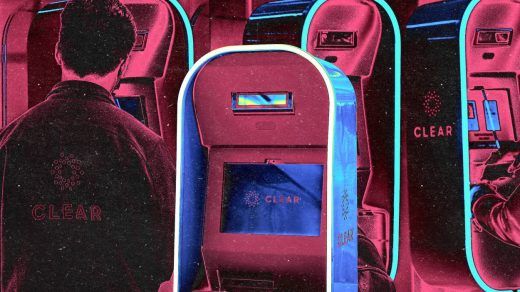Clear is trying to turn our summer of travel hell into a branding opportunity
Branded is a weekly column devoted to the intersection of marketing, business, design, and culture.
The air travel experience hasn’t been much fun lately, as carriers and airports struggle to deal with passenger levels approaching (or even exceeding) pre-pandemic levels. And this summer is expected to be particularly turbulent for flyers. But one travel company has a strategy that, in effect, treats crowds of frustrated travelers as a branding opportunity.
Clear Secure, best known for its service that lets you speed up the security line process for a fee, will offer a related service it calls “Reserve powered by Clear” at about 20 airports this summer. In a nutshell, it lets you prebook a time slot that will let you go straight to the front of the security line, in front of all the hoi polloi lacking Clear status. And it’s free—an obvious attempt to attract newbies.
The Washington Post, Wall Street Journal, and others have already touted the option as a shrewd travel hack for savvy travelers. And it’s sure to get Clear plenty of attention from flyers at crowded airports. But this is not a risk-free strategy: What if harried travelers being introduced to the Clear brand by randos cutting the line see it as, basically, yet another insulting annoyance?
If you fly much, you may have encountered Clear Secure before. Its flagship offering, available in more than 40 airports, involves a $179-a-year fee, and forking over biometric data such as an eye scan. That’s fairly pricey, and not everybody is comfortable surrendering biometric identification markers. But it does promise to let you go to the front of the security line. And by many accounts, Clear really does expedite the security process—and definitely has fans.
It also definitely has detractors. One way you may have encountered Clear is in the form of a Clear customer being led ahead of you in a security line. Clear customers do their biometric ID scan on a special kiosk, and then a uniformed Clear “ambassador” escorts them to the head of the line, where the rest of us have no choice but to defer and wait. (That’s true even if you’d paid for the government-run TSA Pre-check option—$78 for five years—which speeds up the actual search step of the security process. Clear customers still go before you.)
When ambassadors aren’t shepherding Clear clients, they may pitch members of the non-Clear queue on the benefits of paying for the service—notably, getting to the head of the line. “It’s extortion,” an irritated passenger once complained to The New York Post. “It wreaks of silky scamminess.” An anti-Clear harangue in Slate argued that the service’s de facto proposition is: “Pay us money and give us your biometric data, and in return you can jump in front of other people to access an essential federal service.”
Clear Secure is a publicly traded company, with revenue last year around $435 million, and a market valuation of about $3.7 billion. According to its most recent shareholders letter, it has more than 16 million members, a number that’s grown steadily. It also has financial deals with airports and other venues where it operates (such as stadiums), and its investors include Delta Air Lines and United Airlines. (The original version of Clear, devised after 9/11 permanently changed the air-security dynamic, went bankrupt in 2009; new owners of its assets relaunched the following year.)
Surely, the company is aware of its mixed reputation—valued by a certain breed of road warrior, resented by many others. Fair or not, it’s an easy symbol of the many ways the travel experience is a virtual caste system, with Elite Super-Platinum Whatevers at one end, enjoying access to airport lounges and extra legroom, and the unprivileged travelers treated like cattle and fortunate to still score a bag of peanuts.
But Clear seems unworried about being associated with this stratified experience. With its Reserve scheme, it is essentially doubling down on its brand identity as a means of circumventing standard procedure—in short, an elite service. Even in the best circumstances, that’s bound to alienate consumers who feel like they’re already paying plenty to get from point A to point B, and shouldn’t have to shell out extra as a misery-reduction fee. And in a summer travel season projected to be chock-full of bad experiences, Clear is potentially setting itself up to be more resented than ever.
Then again, maybe that’s just the cost of building a, quite literally, exclusive brand. “There’s no question that Clear kind of stratifies the security line based on means and how often you’re traveling,” an industry analyst told Vox—but at the same time, he also recommended it to those who travel often and can afford it.
So maybe for Clear, the risk of alienating some is worth the payoff of attracting others: People who go from What is this thing that’s running roughshod over my travel experience? to Hey, how do I get in on that? The Slate critique I cited above described the writer’s exchange with a Clear user who apologized for cutting ahead of him, and admitted she had only signed up because she was tired of being on the other end of the bargain. “I hate this process, too,” she told him. In short: She hated it so much, she became a customer.
This story has been updated to reflect the current price for the TSA’s pre-check service, which was lowered last year. An earlier version incorrectly cited the old price.
(26)



